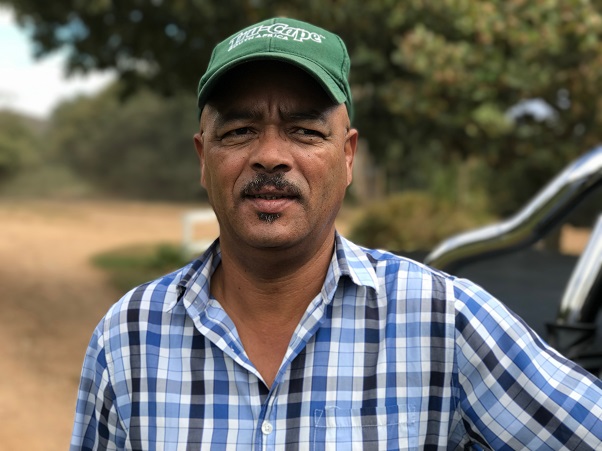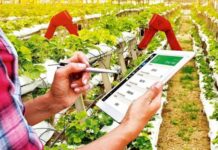Hail damage, drought and high summer temperatures are expected to impact the 2018 Tru-Cape apple and pear crop by about 10% in volume with a greater number of small fruit which might lead to a drop in export income.
This, according to Tru-Cape marketing director Conrad Fick, means the company has been negotiating purchase programmes with customers to maximise the value of their growers’ whole bin and to return maximum value to allow them to further invest in crop planting.
Andre Cloete, a Tru-Cape grower at Klein Ezeljacht Farm in the Overberg, near Greyton, said that hail had damaged 35% of his crop of red apples while Golden Delicious, still the favourite apple on the African continent, was decimated by 55%. “We saw sunburn damage from temperatures as high as 44 degrees centigrade for two consecutive days, followed by 75ml of rain in two hours during a drought period which led to flooding. Hail stones, the size of my thumb nail, came next”, Cloete says, “we are experiencing one extreme in climate to the next.”
Cloete says they typically have between 1000ml and 1200ml of winter rain in the year but this last year have had to reduce their apple and pear crop irrigation, typically between September and May, by 60% which means that the trees are only getting 40% of the water they want.
“This is already the third year that we are dealing with drier winters and thanks to investment in monitoring and irrigation technologies that includes scheduling we are using neutron probes to accurately measure soil moisture and transpiration.” he says.
Fick says for Tru-Cape Fruit Marketing, the largest exporter of South African apples and pears, their ability to supply apples and pears in volume for 12 months of the year is one of the company’s strategic advantages. “Part of our procurement strategy is to have fruit available from a number of different climatic regions so that when climate impacts fruit from one region we are able to source fruit from another region”, he says explaining that Tru-Cape has growers in the Elgin, Grabouw, Villiersdorp and Vyeboom valleys as well as more than 140 km away in Ceres and the Witzenberg Valleys and then, on the edge of the Western Cape, 600 km east, in the Langkloof area.
“Tru-Cape packs in 147 000 different permutations when we consider the variety, size, colour, spec and brand into which we pack. Even though we are South Africa’s largest exporter South Africa is just about one percent of global apple and pear production with China growing around half of all the apples and pears in the world. Like all South African exporters we are competing with growers and marketers in Argentina, Chile, New Zealand and even in Europe although we benefit from being counter-seasonal so are able to supply our customers in Europe, and other northern hemisphere areas, when they cannot produce.” Fick ends.
Both Fick and Cloete agree that legs or the staying quality of fruit impacted by the drought will play a role in reducing income from the current crop. “Areas that will take five or more weeks for our product to land on shelf such as at our Northern American and Canadian customers and some customers in the Far East are most at risk of fruit arriving at less than optimum quality because of the impact of drought and high temperatures. Our technical teams are, however, working around the clock doing maturity testing and other examinations of fruit to ensure we are able to supply the very best product despite the challenges.” Fick ends.









